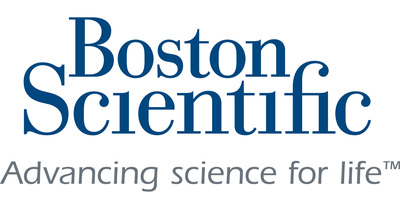Boston Scientific AGENT™ Drug-Coated Balloon Demonstrates Superiority to Uncoated Balloon Angioplasty in the AGENT IDE Trial
- Positive outcomes in the trial population support the AGENT DCB as an alternative treatment option for coronary ISR. The AGENT DCB demonstrated a 38% relative risk reduction in target lesion failure. There were zero cases of stent thrombosis with the AGENT DCB. There was a 51% risk reduction in repeated percutaneous coronary interventions and a 49% risk reduction in heart attacks with the AGENT DCB.
- None.
Insights
Analyzing...
Data from first coronary DCB study in
While coronary stenting is commonly used to restore blood flow to the heart in patients with coronary artery disease, ISR – a condition in which the stented section of the artery becomes obstructed or narrowed by plaque or scar tissue – still occurs in some cases and is addressed in
This trial met the primary endpoint of target lesion failure4 (TLF) at 12 months with the AGENT DCB demonstrating statistical superiority to uncoated balloon angioplasty (
- Zero definite/probable cases of clotting within the stent, known as stent thrombosis (
0.0% vs.3.9% , P=0.001) 51% risk reduction in TLR (12.4% vs.24.0% , P=0.002)49% risk reduction in TV-MI (6.4% vs.12.3% , P=0.03)
"Positive outcomes in this complex trial population – from the markedly lower rate of target lesion failure to the significant reduction in heart attack and no stent thromboses – support the AGENT DCB as an alternative treatment option for coronary in-stent restenosis," said principal investigator Dr. Robert W. Yeh, section chief of interventional cardiology at the Beth Israel Deaconess Medical Center, and the Katz-Silver Family Professor of Medicine at Harvard Medical School. "Meaningful therapy advancements for this condition are critical, and the ability to reduce the risk of restenosis without using radiation or introducing another layer of metal stenting is a promising step forward."
The data presented today from this multicenter, prospective and randomized controlled AGENT IDE trial include the first 480 of 600 patients enrolled across 40 U.S. sites.5 Within the patient population,
"These encouraging results add to the growing body of clinical evidence supporting the AGENT DCB, spanning nearly 7,400 patients in 14 completed and ongoing studies worldwide," said Dr. Janarthanan Sathananthan, M.D., chief medical officer, Interventional Cardiology Therapies, Boston Scientific. "In light of the successful real-world use of the device outside the
The AGENT DCB was approved in
The AGENT DCB is an investigational device. Restricted by Federal law to investigational use only. Not available for sale in the
About Boston Scientific
Boston Scientific transforms lives through innovative medical solutions that improve the health of patients around the world. As a global medical technology leader for more than 40 years, we advance science for life by providing a broad range of high performance solutions that address unmet patient needs and reduce the cost of healthcare. For more information, visit www.bostonscientific.com and connect on Twitter and Facebook.
Cautionary Statement Regarding Forward-Looking Statements
This press release contains forward-looking statements within the meaning of Section 27A of the Securities Act of 1933 and Section 21E of the Securities Exchange Act of 1934. Forward-looking statements may be identified by words like "anticipate," "expect," "project," "believe," "plan," "estimate," "may," "intend" and similar words. These forward-looking statements are based on our beliefs, assumptions and estimates using information available to us at the time and are not intended to be guarantees of future events or performance. These forward-looking statements include, among other things, statements regarding our business plans, product performance and impact, new and anticipated product approvals and launches, and clinical trials. If our underlying assumptions turn out to be incorrect, or if certain risks or uncertainties materialize, actual results could vary materially from the expectations and projections expressed or implied by our forward-looking statements. These factors, in some cases, have affected and in the future (together with other factors) could affect our ability to implement our business strategy and may cause actual results to differ materially from those contemplated by the statements expressed in this press release. As a result, readers are cautioned not to place undue reliance on any of our forward-looking statements.
Factors that may cause such differences include, among other things: future global economic, political, competitive, reimbursement and regulatory conditions; new product introductions; expected procedural volumes; demographic trends; intellectual property; litigation; financial market conditions; execution and effect of our business strategy; and future business decisions made by us and our competitors. All of these factors are difficult or impossible to predict accurately and many of them are beyond our control. For a further list and description of these and other important risks and uncertainties that may affect our future operations, see Part I, Item 1A – Risk Factors in our most recent Annual Report on Form 10-K filed with the Securities and Exchange Commission, which we may update in Part II, Item 1A – Risk Factors in Quarterly Reports on Form 10-Q we have filed or will file hereafter. We disclaim any intention or obligation to publicly update or revise any forward-looking statements to reflect any change in our expectations or in events, conditions or circumstances on which those expectations may be based, or that may affect the likelihood that actual results will differ from those contained in the forward-looking statements. This cautionary statement is applicable to all forward-looking statements contained in this document.
CONTACTS:
Angela Mineo
Media Relations
(763) 955-8325 (office)
Angela.mineo@bsci.com
Lauren Tengler
Investor Relations
(508) 683-4479
BSXInvestorRelations@bsci.com
* Dr. Robert Yeh is a paid consultant of Boston Scientific Corporation. He has not been compensated in connection with this press release.
1 Yeh RW, Bachinsky W, Stoler R, et al. Rationale and design of a randomized study comparing the AGENT drug coated balloon to plain old balloon angioplasty in patients with In-stent restenosis. American Heart Journal. 2021;241:101-107. doi:10.1016/j.ahj.2021.07.008.
2 Moussa ID, Mohananey D, Saucedo J, et al. Trends and outcomes of restenosis after coronary stent implantation in
3 Shlofmitz E, Iantorno M, Waksman R. Restenosis of Drug-Eluting Stents: A New Classification System Based on Disease Mechanism to Guide Treatment and State-of-the-Art Review. Circ Cardiovasc Interv. 2019 Aug;12(8):e007023. doi: 10.1161/CIRCINTERVENTIONS.118.007023.
4 TLF was defined as myocardial infarction relative to the target vessel, the need for a target lesion revascularization (TLR) procedure or cardiac mortality.
5 Prespecified interim analysis of 480 patients
![]() View original content to download multimedia:https://www.prnewswire.com/news-releases/boston-scientific-agent-drug-coated-balloon-demonstrates-superiority-to-uncoated-balloon-angioplasty-in-the-agent-ide-trial-301967754.html
View original content to download multimedia:https://www.prnewswire.com/news-releases/boston-scientific-agent-drug-coated-balloon-demonstrates-superiority-to-uncoated-balloon-angioplasty-in-the-agent-ide-trial-301967754.html
SOURCE Boston Scientific Corporation









